|
March 31, 2022
Dear Neighbors and Friends,
I hope that you and your loved ones are doing well, staying healthy, and looking out for your neighbors and friends during this past week.
Tonight’s newsletter continues my lookback at the Education bills that passed (and didn’t pass) in the recently-concluded session. Check them out, and please let me know if you have any questions about them.
Though it's less than a month since the end of the short session, I and many of my colleagues are already fully engaged in work groups and task forces, both state and national, problem-solving and preparing legislation for 2023. (I’m leading or a member of at least a half-dozen that have begun meeting already.)
I’ve just finished two days of hearings and site visits related to one of them—the Task Force on Underrepresented Students in Higher Education. My head is still spinning with the difficult stories that we heard about the challenges faced by the low-income, “nontraditional” college and university students who are looking to us for help in reducing their debt load and allowing them to persevere in their studies and training. They need us, and we need them. I’ll be talking a lot about these needs in the coming months and would love your ideas about how to help more students (including those who’ve been away from school for many years) access and succeed in post-secondary education, apprenticeships, and other forms of workforce training.
Moving over to COVID, you’ll see in tonight’s links, reports, and graphs, COVID remains with us, increasingly in the form of the new Omicron BA.2 subvariant. Reported infections remain a fraction of what they were two months ago—mainly because the original Omicron wave has run its course (also, more Oregonians are relying on home tests, which are generally not reported.)
I’m happy to report that the number of COVID hospitalizations and especially ICU hospitalizations are at their lowest level of the pandemic now, which is a real relief. The OHSU forecast predicts that we will see those numbers rise somewhat, based on what we’re seeing in other countries, but we should not see a return to high levels, at least not in the near future. It will help that older Americans have been cleared for another booster dose, which should provide good coverage, at least to the fall.
For now at least, the federal government will continue to pick up the cost of those additional doses.
Until the next newsletter, please stay healthy and safe. And let me know if you have any questions or thoughts about anything in tonight’s newsletter.
April Constituent Coffee!!!
Saturday, April 2, is the first Saturday of the month, and that means it’s time for our regular constituent coffee from 9 to10:30. It will be virtual again, though I’m hoping that in May we’ll be able to do it in person. (And thereafter a mix of in-person and virtual.)
This will be a chance for us to debrief further on the 2022 session, let you know more about the interim work that’s going on, and get your thoughts about future action that you think is needed.
Hope to see you there! You can register for the coffee here.
LOOKING BACK AT THE 2022 SESSION: EDUCATION (Part 2)
SB 1572 Federal Public Service Loan Forgiveness
Passed the Senate 24-2, the House 58-0, Senate concurred in House amendments 21-4.
SB 1572 is one of those bills that started as one thing and wound up as another. As introduced, it would have dealt with harassment issues in higher education. However, its sponsors decided it needed more work and its subject would be addressed in the next session. That made the bill number available for me to use to address another issue that arose last-minute: a need to make sure that part-time college and university faculty were eligible for federal public service loan forgiveness. FPSLF is an extremely valuable program for those who commit to public service for a number of years. However, to be eligible, faculty have to meet a threshold of hours worked, and only those hours in which they were in the classroom were being counted (i.e., nothing for research, preparation, grading, or other work). This has led many part-timers to be excluded, even though they were working at a substantively full-time level. We were able to use this bill to fix that technicality. It will make a huge difference for a number of hard-working college teachers.
Two Bills Related to the Potential Overuse of Standardized Testing:
SB 1583 Limiting Standardized Testing to Those Federally Required
17-7 Senate, 37-23 House
HB 4124: Inventory of All Standardized Testing Occurring in Districts
49-10 House, 23-3 Senate
These two bills come in response to concerns that we are spending too much class time on unnecessary standardized tests, which tell us little about the performance and needs of individual students. The Senate bill, sponsored by Senator Lew Frederick, calls for the state to require no more standardized testing than is required by the federal government, and directs the Oregon Department of Education to seek waivers to allow us to use representative sampling of students for testing, so that not every student needs to take every test. The House bill, sponsored by Representative Nancy Nathanson, directs ODE to study and report on all the cumulative testing—federal, state, and local—that is occurring in each of our districts. This information will help us understand the extent of the potential problem and consider potential next steps.
HB 4005: Access to Childcare
52-7 House, 24-3 Senate
HB 4005 contains the policy portions of the big childcare package that the Legislature enacted in the 2022 session. As a result of bipartisan work begun in the 2021 session, we are in the process of creating the Department of Early Learning and Care (DELC). HB 4005 continues that process and will create a more coordinated approach over the next few years by merging programs from ODE’s Early Learning Division with others from the Department of Human Services. HB 4005, along with additional funding in the budget bill (for a total of $100 million), will provide more support for childcare providers and higher wages and training for those who do this important work.
You can read my floor carry of the bill here.
HB 4026: Relief for Districts Affected by Wildfires
60-0 House, 27-0 Senate
This bipartisan bill, spearheaded by Rep. Pam Marsh (D-Ashland), invests $25 million in support for school districts hit hard by the Labor Day wildfires in 2020. Several of them saw big enrollment drops as families needed to relocate temporarily while their homes are being rebuilt and their lives restored. This allocation will allow their schools to transition through this difficult period.
Funding for Tubman Middle School Relocation
One of the consequences of the big transportation package passed several years ago, which included widening of I-5 just north of the Rose Quarter area, is that the freeway and its exhaust emissions will be that much closer to Tubman Middle School, located next to the freeway. The proximity of the freeway to the school is already a problem that has required an upgrade to its HVAC system. There is consensus that if ODOT goes forward with this (already complex and controversial) project, the State bears a responsibility to relocate the school to a healthier site. Consequently, the Governor asked the Legislature to allocate funds to do that.
The final budget bill allocates $120 million for this purpose. It's not yet clear where the school's ultimate destination will be. However, the district has made it clear that it will not be displacing King Elementary (as was early feared) for this purpose.
Education Bills That Did Not Pass:
As always occurs, certainly during a short session, several education-related bills were voted out of their initial policy committees, went to Ways and Means because they required budget allocations, and ultimately died there for a variety of reasons: a belief that more work was needed on the bill, partisan controversy, or simply that the session clock ran out. All of them will be back in some form in 2023, and at least one of them (SB 1587) is already the subject of an interim work group.
SB 1578: Giving ODE authority and staff to investigate districts that are the subject of serious complaints regarding inequitable treatment of Special Education students and other serious discrimination charges.
HB 4029: Requiring training in subjects such as public meeting law, equity, harassment and discrimination for school board members and superintendents.
HB 4091: Creating a new Statewide Education Success Plan for students who are native Hawaiian and Pacific Islanders, similar to the existing success plans for African-American and Native American students.
HB 4099: Establishes the Racial Equity and Justice Youth Collaborative, a statewide self-advocacy group for students.
HB 4112: Appropriates professional development funding for social studies teachers who will soon be using the new Ethnic Studies standards developed as a result of HB 2845 (2017).
ON THE COVID FRONT
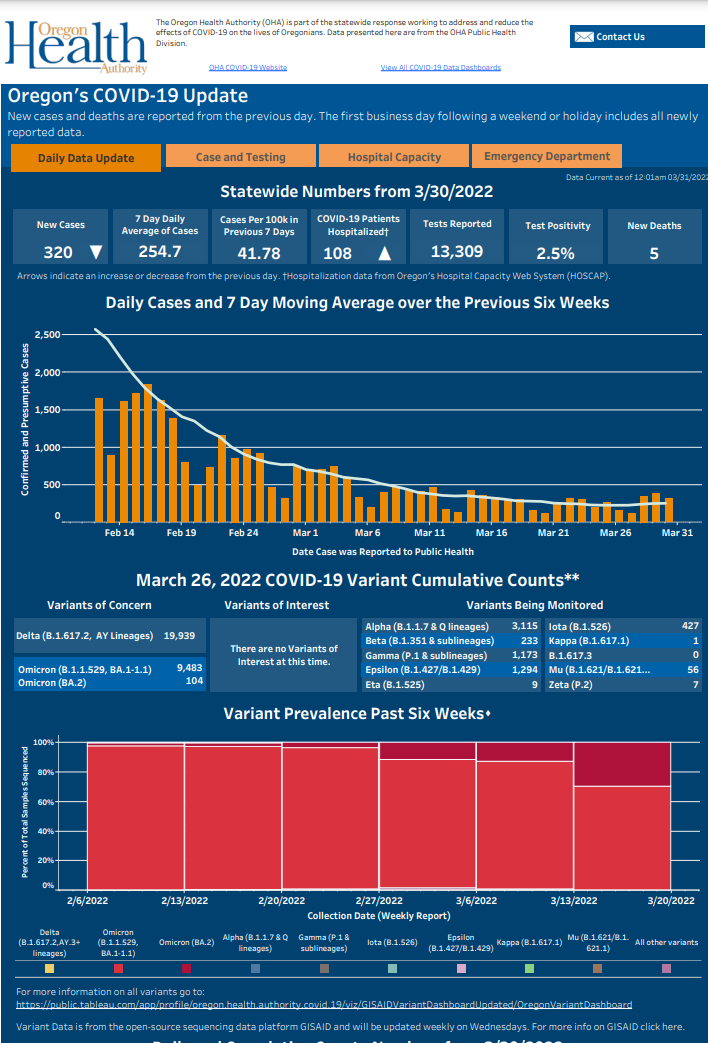
Additional COVID Updates and Links
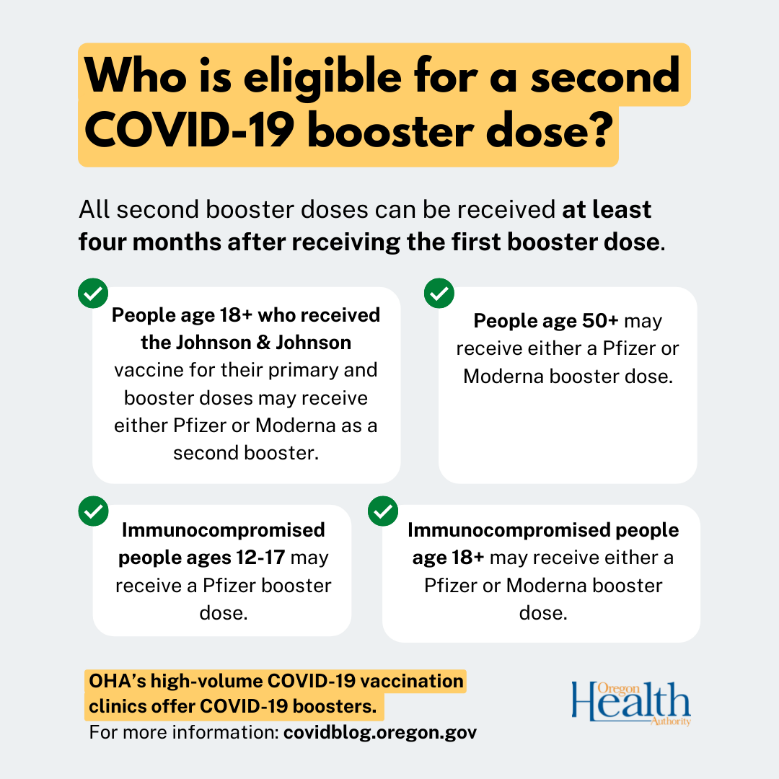
OHA Weekly Report: Another Big Drop in New Oregon Cases and Hospitalizations, Increase in Deaths
The COVID-19 Weekly Report released Wednesday, showed declines in weekly cases, COVID-19-related hospitalizations, but a small increase in deaths.
- OHA reported 1,403 new cases of COVID-19 during the week of Monday, March 21 through Sunday, March 27– a 21% decline from the previous week. COVID-19 cases have fallen 98% from their peak in mid-January.
- There were 148 COVID-19-related hospitalizations, down from 156 last week.
- There were 99 COVID-19-related deaths, up from 90 last week.
- There was another big drop in tests reported, 67,504, down from the previous week’s 89,917.
- The test positivity rate was 7%, a slight increase from the previous week’s 2.5%.
- Wednesday’s COVID-19 Weekly Outbreak Reportshows 67 total active outbreaks in care facilities, senior living communities and congregate living settings, down from the previous week’s 98. OHA reported OHA reported 35 COVID deaths for residents of congregate care, an increase of 15 from last week’s 20.
Weekly County Report: Continuing Decline in Infection Rates Around the State; Slight Uptick in Test Positivity Rate
The latest OHA county report, showing increases/decreases in COVID spread for each county and for the state as a whole, was released on Monday. It shows case counts and rates for the last four weeks, including data up to March 27.
The Omicron transmission numbers reported this week remain at Low levels for the state as a whole.
The statewide infection rate has gone from 46.6 per 100K in the last report to 37.5 per 100K in this one; however, we are seeing a slight increase in the test positivity rate, from 2.5% last week to 2.7% this week. This is still quite low but something to watch.
Nearly every county saw a further decline in infection rates and positivity rates. One of the exceptions was Multnomah County, which saw a slight increase from 52.1 per 100K to 56.4 per 100K and a noticeable increase in test positivity from 2.2% to 2.8%.
With COVID Declines, OHA Changing Reporting
OHA has just announced changes in the nature and frequency of its COVID reporting. It will no longer send out daily news releases, but will provide most of the same information on its website.. The Weekly COVID and Outbreak Reports will become biweekly reports. It will no longer provide the information about each of the deaths reported that day that we have come to expect. Here is the communication from OHA with all the information they’ll be providing:
Effective Monday, April 4, OHA will post the following information every business day on OHA’s COVID-19 website, and on Twitter, Facebook and OHA Facebook en Espanol:
- Newly reported COVID-19 cases
- Total COVID-19 cases
- Newly reported deaths with COVID-19
- Total deaths with COVID-19
- New hospitalizations of COVID-19 positive patients
- Total current hospitalizations of COVID-19 positive patients.
In addition, OHA will publish a new data dashboard daily, highlighting data from several sources that monitor for COVID-19, trends and links to related dashboards for more detailed information.
Data presented on the new dashboard include:
- New COVID-19 cases, the 7-day average of new COVID-19 cases and total COVID-19 cases from Opera, Oregon’s COVID-19 disease surveillance system, with a chart showing the daily trend.
- Newly reported deaths with COVID-19, total deaths with COVID-19, and a chart of deaths with COVID-19 by date of death.
- Current COVID-19 positive patients hospitalized and in intensive care unit (ICU) beds statewide as reported to HOSCAP, Oregon’s hospital capacity web system, with a chart showing the daily trend.
- Percentage of statewide emergency department visits for COVID-19 like illness (CLI), as reported to Oregon ESSENCE, with a chart showing the daily trend.
- Vaccination coverage among people statewide ages 18 years and older showing people with at least one dose and people boosted as reported to ALERT, Oregon’s Immunization Information System, with a chart showing trend over time. These data will be updated weekly on Wednesdays.
- The number of COVID-19 tests reported and the percentage of tests that are positive, as reported to OHA, with a chart showing the daily trends.
- The total number of variants of concern – Delta, Omicron (B1.1.529, BA1-1.1), and Omicron (BA.2) – sequenced statewide, with a chart showing trend over time. These data will be updated weekly on Wednesdays.
The cadence of some of OHA’s current COVID-19 reports will change starting the week of April 4. The COVID-19 vaccination dashboards, the Oregon COVID-19 Case and Testing Counts Statewide dashboard and the Oregon COVID-19 Testing and Outcomes by County dashboard will be published weekly on Wednesdays. The Data Report and Outbreak Report will be published every other week and the Breakthrough Report will be published monthly.
New OHSU Forecast Continues to Show Declines, Predicts Only Slight Increases
The current OHSU forecast report, published last Friday, uses data provided by OHA and others that project how fast the virus may spread in the population and provides projections on possible outcomes, including infection rates and impacts on hospital capacity. The lead author is Dr. Peter Graven, Director of OHSU’s Office of Advanced Analytics. It appears every two weeks.
This forecast shows that the steep declines in hospitalizations are continuing. Dr. Graven is predicting that we will likely see some increases, as a result both of the BA.2 subvariant and the relaxation of masking requirements, but it should not result in substantial increases.
Here are key observations in this week’s report:
- The number of patients in Oregon hospitals as of March 25 was 157, down by 123 patients in two weeks.
- Activities such as spending time indoors with others, going to bars and restaurants indoors, and going to large events indoors have continued to increase. Some saw an extra increase after Oregon lifted mask mandates.
- Hospitalizations and case counts remain low in all regions of Oregon and the U.S.
- Masking in Oregon dropped to 47% after the mandate was lifted March 12, down from 74% two weeks ago.
- The BA.2 omicron variant is most likely prevalent in Oregon. Early data shows it could already account for more than half of positive cases.
- Most countries in Europe have had increases in cases over the last two months. Two key factors seem to be related: an increase in the BA.2 variant and removal of COVID restrictions.
- As of March 23, only 5% of occupied ICU beds had COVID patients in them statewide, a decrease from 9% two weeks before.
- Four children were in Oregon hospitals, similar to the pre-omicron level.
- COVID deaths per day have been revised upward in recent data, showing more deaths during the omicron wave than previously reported.
- Flu cases remain low in Oregon, but Denmark is seeing a surprising increase. In addition, South America appears to be seeing a sustained increase as it edges into its fall season.
- BA.2 and a drop in prevention behaviors are expected to lead to an increase in hospitalizations.
- The increase is expected to be mild, though; a large portion of the population has some immunity because of vaccination or a prior infection.
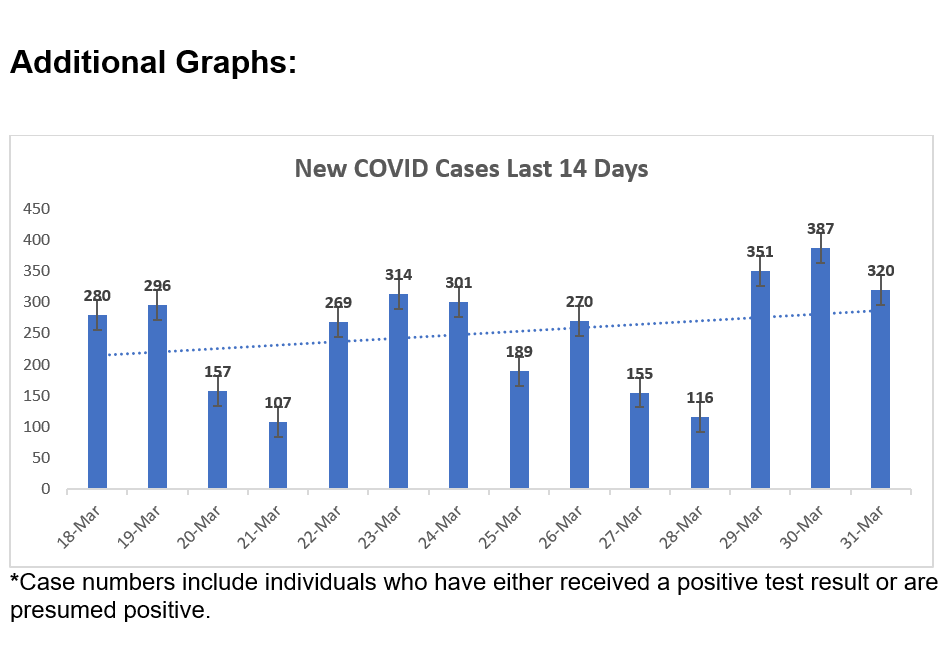
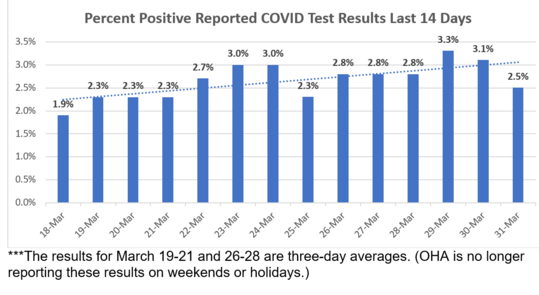

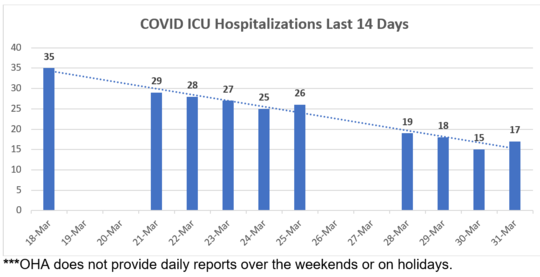
 Here again are some COVID resources that you will find useful
If the above links are not providing you with answers to your questions or directing you to the help that you need, please consider me and my office to be a resource. We’ll do our best to assist you or steer you in the right direction.
Want to See Past Newsletters?
If there was COVID-related information in a past newsletter that you want to go back to, but find you’ve deleted it, you can always go to my legislative website (senatordembrow.com), click on “News and Information,” and you’ll find them all there. Also, if someone forwarded you this newsletter and you’d like to get it directly, you can sign up for it there.
Best,
 Senator Michael Dembrow
District 23
email: Sen.MichaelDembrow@oregonlegislature.gov
web: www.senatordembrow.com
phone: 503-281-0608
mail: 900 Court St NE, S-407, Salem, OR, 97301
|